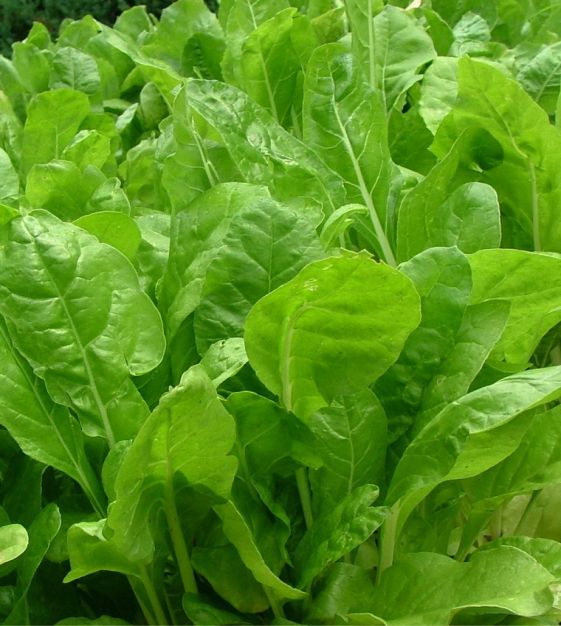Back to Top
Argentata Swiss Chard
60 days. This heirloom Chard, also known as Bionda Costa, is particularly revered by Italian cooks. Argentata produces extraordinarily large, deep green, savoyed leaves, sturdy and easily handled. The luminous, silvery-white stems lend a fairy tale ambience to the kitchen garden, growing up to 3' if grown in soil amended with lots of organic matter. As baby greens, Argentata adds a silvery sparkle to salads. (OP.)
One packet of about 200 seeds
One packet of about 200 seeds
- Buy 10 for $4.45 each and save 10%
- Buy 50 for $3.70 each and save 25%
- Information
- Gardening Tips
A Beet family relative, Swiss Chard is easy to grow, delicious and beautiful. It fits in everywhere: the kitchen garden, ornamental beds and containers. Direct-sow seed after all threat of frost has passed in spring, when the soil has warmed up to about 50°F. For baby greens, sow 2" apart in rows spaced 12" apart and harvested when 2" to 3" tall. For mature, full-size Chard, thin seedlings to 10" apart in rows spaced 16" to 20" apart. To harvest, cut off the outer leaves of these grand plants, which keep on producing, even through a light frost. Water Swiss Chard regularly in dry periods to help keep the stems from becoming woody. Baby leaves may harvested through the season in the cut-and-come-again method for fresh salads as well as cooked as one would in Spinach recipes. Generally, about a month later, mature leaves may be stripped from their stems and chiffonaded for pasta sauces, hearty soups and stews. We like Swiss Chard added to slow-sautéed diced pancetta in Garlic-flavored olive oil, braised in chicken broth, and sprinkled with toasted pine nuts and grated Pecorino. For that matter, Swiss Chard is a good mate for any sort of pork, ricotta-based pasta filling, custard-based frittata or cheesy rice gratin. Wilted Swiss Chard is heavenly braised with golden raisins and finished with a bit of heavy cream and butter. (What isn't?) Mature stems may be used for dips and piped soft cheese spreads. Deer resistant.
Average seed life: 2 years.
Average seed life: 2 years.
A Beet family relative, Swiss Chard is easy to grow, delicious and beautiful. It fits in everywhere: the kitchen garden, ornamental beds and containers. Direct-sow seed after all threat of frost has passed in spring, when the soil has warmed up to about 50°F. For baby greens, sow 2" apart in rows spaced 12" apart and harvested when 2" to 3" tall. For mature, full-size Chard, thin seedlings to 10" apart in rows spaced 16" to 20" apart. To harvest, cut off the outer leaves of these grand plants, which keep on producing, even through a light frost. Water Swiss Chard regularly in dry periods to help keep the stems from becoming woody. Baby leaves may harvested through the season in the cut-and-come-again method for fresh salads as well as cooked as one would in Spinach recipes. Generally, about a month later, mature leaves may be stripped from their stems and chiffonaded for pasta sauces, hearty soups and stews. We like Swiss Chard added to slow-sautéed diced pancetta in Garlic-flavored olive oil, braised in chicken broth, and sprinkled with toasted pine nuts and grated Pecorino. For that matter, Swiss Chard is a good mate for any sort of pork, ricotta-based pasta filling, custard-based frittata or cheesy rice gratin. Wilted Swiss Chard is heavenly braised with golden raisins and finished with a bit of heavy cream and butter. (What isn't?) Mature stems may be used for dips and piped soft cheese spreads. Deer resistant.
Average seed life: 2 years.
Average seed life: 2 years.




